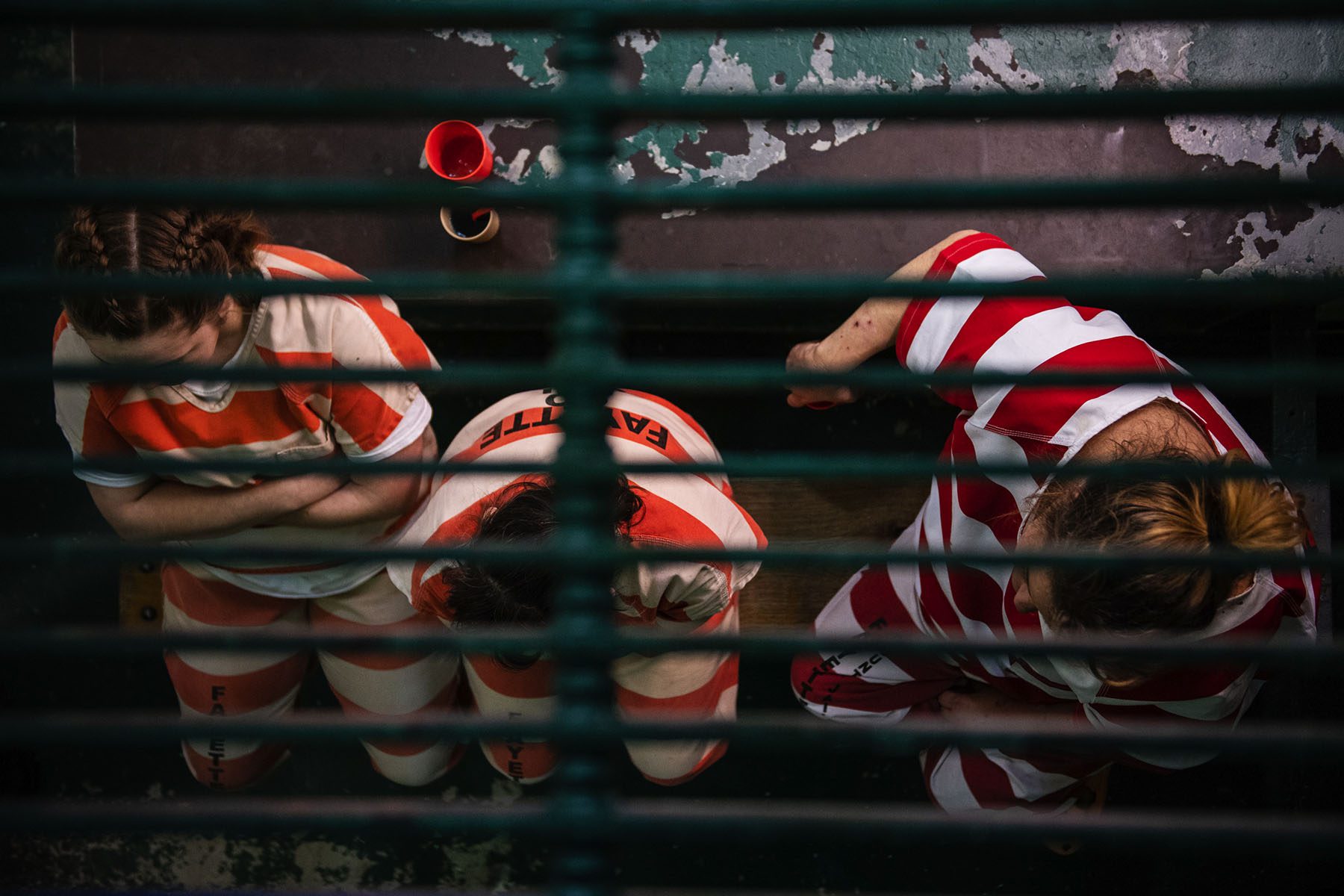The number of women serving one of the country’s harshest prison sentences — life without parole — is growing at a faster pace than the rate for men, but the criminal legal system tends to overlook the specific impact of gender, social and economic inequality on women’s involvement in crime, researchers say.
A new report examining long-term prison sentences for women raises questions about how these decisions are made and what a gender-responsive approach might look like.
From 2008 to 2020, the number of women imprisoned for violent crimes increased by 2 percent, but the number serving life sentences grew 19 percent, according to research by the Sentencing Project, the National Black Women’s Justice Institute and the Cornell Center on the Death Penalty Worldwide. This includes a 10 percent rise in the number of women in prison serving life with parole and a 43 percent jump in those serving life without parole. There isn’t sufficient data available on transgender women and non-binary people, said Ashley Nellis, senior research analyst at the Sentencing Project and the author of the report.
“The number of women serving life without parole has increased substantially and faster than men serving life without parole,” Nellis said, adding that the population of men serving life without parole grew by 29 percent. Two thousand women are serving life without parole, and 52 women are on death row throughout the country. The majority of these life sentences are concentrated in 12 states, with the highest number in Florida, Pennsylvania, California, Michigan and Louisiana.
It’s not just long-term sentences that are showing gaps between women and men. From 2008 to 2018, the women’s jail population grew by 15 percent while men’s decreased by 9 percent, according to federal data.The population of women in prison has decreased by 3.3 percent in that period, while men’s prison population decreased by 9.3 percent. Compared with men, women represent a much smaller segment of the overall incarcerated population, but Nellis said they still need attention from researchers.
There’s no definitive answer yet for why these disparate incarceration trends are occurring for men and women, but Nellis said the lack of institutional support for women is likely one key factor. “The systems that we have in this country that are supposed to provide safety nets, and are supposed to keep people safe and protect communities, I think are failing women,” Nellis said.
When it comes specifically to the rise of long-term sentences like life without parole, prosecutors and judges may not consider women’s past trauma, the circumstances surrounding their crimes or even a woman’s level of involvement before bringing charges or making a sentence, according to the report. For women, experiences with gender-based violence and mental illness are often linked to committing crimes and entering the criminal justice system.
Women may resort to violence to protect themselves from domestic or partner abuse; they may be coerced into assisting with crimes. More broadly, “people who are victims of crime are at greater risk of engaging in activities that place them at risk of incarceration later,” said Sydney McKinney, executive director of the National Black Women’s Justice Institute.
The Vera Institute of Justice determined that about 86 percent of women in jail have experienced sexual violence and 77 percent have experienced intimate partner violence. The most recent federal survey assessing mental health for incarcerated people found that about 66 percent of women in prisons, compared with 37 percent of people in prisons overall, reported being told by a mental health professional they had a mental health disorder. Government resources are often limited for trauma support, mental health care or sexual violence prevention both inside and outside detention facilities.
Some states have looked to new policy: New York enacted the Domestic Violence Survivors Justice Act in 2019 in an attempt to provide more lenient sentencing, and 2016 law in Illinois directed judges to consider reduced sentences for survivors of abuse. Both have had limited success.
In addition to trauma-related factors in women’s crime, the report also notes that women tend to have smaller and less violent roles in crime scenarios than men. However, people who assist with violent crimes can still be sentenced to a decade or more in prison. An Indiana woman who was the getaway driver during an armed robbery was sentenced to two concurrent prison terms of three to 20 years in 2016. And in Maryland, a 20-year-old woman was sentenced to 95 years with the possibility of parole in 2018 for helping to plan and serve as lookout during several gang-related robberies.
There’s a common perception that women are often sentenced more leniently because they are perceived as less threatening than men, McKinney said. Research over several decades indicates women are more likely than men to receive probation or reduced sentences than men. But women and girls charged with violent offenses are frequently viewed as deviating from cultural and gender expectations about femininity or motherhood, which can negatively influence how they are depicted to a jury or judge in court, said Sandra Babcock, a law professor and faculty director of the Cornell Center on the Death Penalty Worldwide.
“Prosecutors have to be called out and prevented from using and weaponizing negative gender stereotypes in cases,” she said.
Babcock’s center, in partnership with the Sentencing Project and the National Black Women’s Justice Institute, plans to make this latest study part of a series examining incarceration trends among women. Research and reform efforts focus less on addressing women’s disproportionate experiences with gender-based violence, mental illness and economic disparities.
McKinney said she would like to see more study of how gender-based violence in society influences incarceration rates for women.
“The vast majority of people who are impacted by the criminal legal system, the vast majority of people who are incarcerated — who have committed violence offenses — are people who have experienced violence and harm,” McKinney said. “There’s a false dichotomy in our criminal legal system that positions a person who is considered a victim against a person who is a perpetrator. That’s not real.”
Government leaders also need to rethink how they invest in communities and support networks, she added, which would help mitigate incarceration rates and long sentences for all people.







